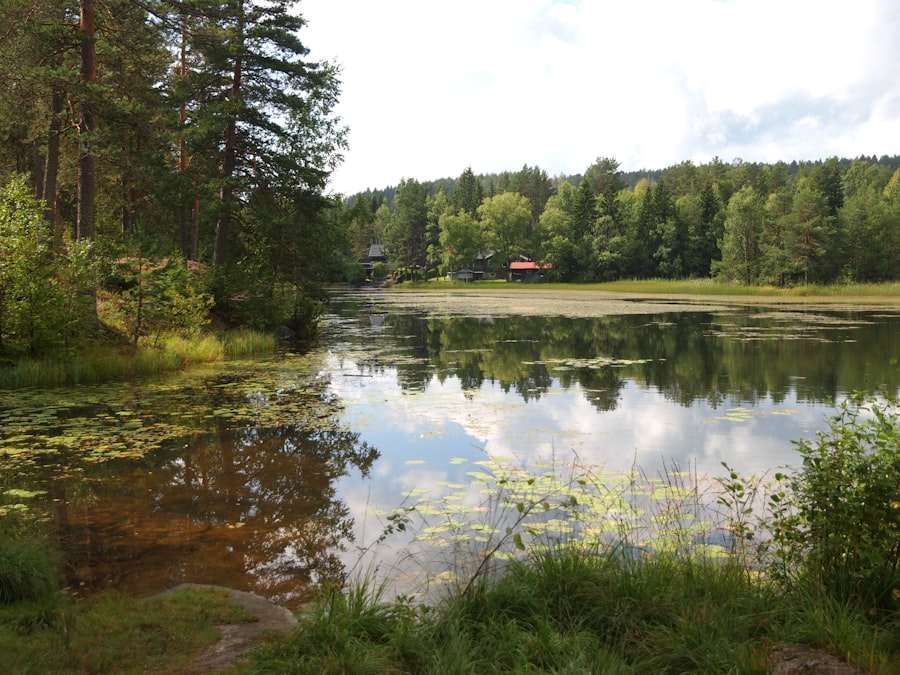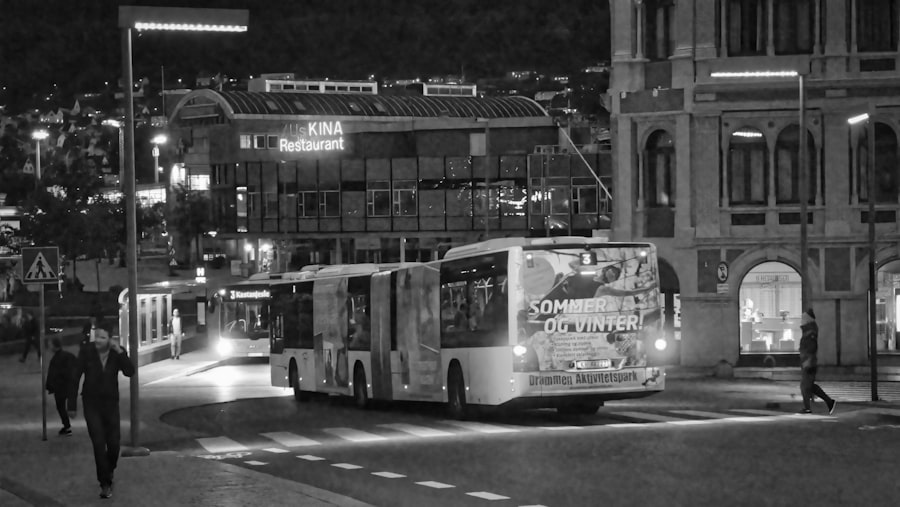In today’s increasingly interconnected world, the significance of family language within a multilingual society cannot be overstated. Language serves as a vital conduit for communication, cultural identity, and emotional connection among family members. For families who speak multiple languages, the home often becomes a microcosm of broader societal dynamics, where different languages coexist and interact.
This rich tapestry of linguistic diversity not only enhances cognitive flexibility in children but also fosters a deeper understanding of cultural nuances and social contexts. As families navigate the complexities of multilingualism, the role of family language becomes paramount in ensuring that children develop a strong sense of identity and belonging. Moreover, the ability to communicate in multiple languages opens doors to various opportunities, both academically and socially.
Children who grow up in multilingual environments often exhibit enhanced problem-solving skills and creativity, as they learn to switch between languages and adapt to different communicative contexts. This adaptability is crucial in a globalised world where cross-cultural interactions are commonplace. By prioritising family language, parents can equip their children with the tools necessary to thrive in diverse settings, ultimately contributing to a more inclusive society. Plan your relocation with confidence. Book a personal meeting with the Norway Relocation Group today.
Summary
- Family language is crucial in a multilingual society for preserving cultural identity and fostering strong family bonds.
- “Barnehage Norsk” provides children with the opportunity to develop fluency in Norwegian and gain a deeper understanding of the local culture.
- Maintaining family language at home can be challenging due to outside influences and the dominance of the majority language in the community.
- “Barnehage Norsk” and home language development differ in terms of exposure, context, and the role of peers in language acquisition.
- Supporting “Barnehage Norsk” at home can be achieved through consistent practice, exposure to Norwegian media, and engaging in cultural activities.
Understanding the Benefits of “Barnehage Norsk” for Children
“Barnehage Norsk,” or kindergarten Norwegian, plays a pivotal role in the linguistic and social development of children in Norway. Enrolling children in barnehage provides them with an immersive environment where they can learn the language through play, interaction, and structured activities. This early exposure to Norwegian not only aids in language acquisition but also helps children develop essential social skills as they engage with peers and educators.
The emphasis on collaborative learning in barnehage fosters a sense of community and belonging, which is particularly beneficial for children from multilingual backgrounds. Furthermore, barnehage serves as a bridge between home language and the broader Norwegian society. Children who attend barnehage are more likely to develop proficiency in Norwegian, which is crucial for their future academic success.
The curriculum is designed to be engaging and age-appropriate, allowing children to learn through exploration and creativity. As they navigate this new linguistic landscape, children also gain confidence in their abilities, which can have a lasting impact on their self-esteem and willingness to engage with others.
The Challenges of Maintaining Family Language at Home

While the benefits of barnehage are clear, maintaining family language at home presents its own set of challenges. In many multilingual households, parents may feel pressure to prioritise the dominant language of the society—Norwegian in this case—over their native languages. This shift can lead to a gradual erosion of family language, as children may become more comfortable communicating in Norwegian than in their home language.
The challenge lies in striking a balance between encouraging proficiency in Norwegian while also nurturing the family’s linguistic heritage. Additionally, parents may encounter difficulties in consistently using their native language at home, especially if they are not fluent or confident speakers. This inconsistency can create confusion for children, who may struggle to navigate between different languages.
Furthermore, external influences such as media consumption and peer interactions can further complicate language maintenance efforts. As children are exposed to Norwegian through television, social media, and friendships, they may gravitate towards this dominant language, inadvertently sidelining their family language.
Comparing “Barnehage Norsk” to Home Language Development
When comparing “Barnehage Norsk” to home language development, it is essential to recognise the distinct contexts in which these languages are acquired. Barnehage provides a structured environment where children learn Norwegian through guided activities and social interactions with peers and educators. This setting is designed to promote language development through play-based learning, which is particularly effective for young children.
In contrast, home language development often occurs in a more informal setting, where parents may use their native language during daily routines or family interactions. The differences in these environments can lead to varying levels of proficiency in each language. Children may excel in “Barnehage Norsk” due to the immersive nature of the experience but may struggle with their home language if it is not consistently reinforced.
This disparity can create a linguistic divide that affects children’s confidence and willingness to communicate in their family language. To bridge this gap, it is crucial for parents to actively engage with their children in their native language while also supporting their Norwegian language development.
Strategies for Supporting “Barnehage Norsk” at Home
To effectively support “Barnehage Norsk” at home while maintaining family language, parents can adopt several strategies that promote bilingualism. One effective approach is to establish designated times for each language throughout the day. For instance, parents might choose to speak their native language during meals or family activities while encouraging Norwegian during playtime or homework sessions.
This structured approach helps children understand when to use each language and reinforces their learning from barnehage. Another strategy involves incorporating Norwegian into everyday activities at home. Parents can read Norwegian books, sing songs, or watch educational programmes together with their children.
By making these activities enjoyable and interactive, parents can foster a positive attitude towards learning Norwegian while simultaneously reinforcing their family language. Additionally, involving extended family members or friends who speak Norwegian can provide children with more opportunities to practice the language in a supportive environment.
Creating a Language-Rich Environment for Your Child

Creating a language-rich environment is essential for fostering bilingualism and supporting both “Barnehage Norsk” and family language development. Parents can achieve this by surrounding their children with diverse linguistic resources that stimulate curiosity and engagement. This includes providing access to books, music, and multimedia content in both languages.
By exposing children to a variety of linguistic inputs, parents can enhance vocabulary acquisition and comprehension skills. Moreover, engaging in meaningful conversations with children is crucial for developing their language skills. Parents should encourage open dialogue by asking questions, sharing stories, and discussing daily experiences in both languages.
This not only reinforces vocabulary but also helps children understand the nuances of each language’s structure and usage. By creating an environment where language is celebrated and valued, parents can instil a love for learning that will benefit their children’s linguistic journey.
The Role of Cultural and Community Support in Language Development
Cultural and community support plays a significant role in the language development of multilingual families. Engaging with cultural organisations or community groups that celebrate linguistic diversity can provide families with valuable resources and connections. These organisations often offer workshops, events, and activities that promote both the home language and Norwegian culture, creating opportunities for families to immerse themselves in both linguistic worlds.
Additionally, forming connections with other multilingual families can provide a sense of belonging and shared experience. Parents can exchange tips on maintaining family languages while navigating the challenges of raising bilingual children. Community support networks can also offer access to educational resources such as bilingual books or language classes that further enhance children’s learning experiences.
Addressing the Concerns of Language Shift in Multilingual Families
Language shift is a common concern among multilingual families, particularly when one language dominates societal interactions. Parents may worry that their children’s proficiency in the family language will diminish over time as they become more immersed in Norwegian culture and education. To address these concerns, it is essential for parents to remain proactive in promoting their native language at home while also recognising the importance of Norwegian proficiency for their children’s future success.
One effective way to combat language shift is by fostering pride in cultural heritage through storytelling, traditions, and celebrations that highlight the family’s linguistic background. By instilling a sense of pride in their heritage, parents can motivate children to maintain their family language alongside their Norwegian skills. Additionally, regular communication with extended family members who speak the home language can reinforce its importance and provide children with authentic opportunities to practice.
The Impact of Language Proficiency on Academic Achievement
Research has shown that proficiency in multiple languages positively impacts academic achievement across various subjects. Children who are bilingual often demonstrate enhanced cognitive abilities such as critical thinking, problem-solving skills, and creativity—traits that are invaluable in an academic setting. Furthermore, strong proficiency in both Norwegian and the family language allows children to access a broader range of educational resources and perspectives.
In Norway’s educational system, proficiency in Norwegian is crucial for success; however, maintaining proficiency in the family language can also enrich children’s learning experiences by providing them with diverse viewpoints and cultural insights. As they navigate different languages and cultures, children develop adaptability and resilience—qualities that contribute significantly to their overall academic performance.
Navigating the Dynamics of Language Choice in Multilingual Families
Navigating the dynamics of language choice within multilingual families can be complex but rewarding. Parents must consider various factors when deciding which language to use in different contexts—such as cultural significance, emotional connection, and practical considerations related to education or social interactions. Establishing clear guidelines for when to use each language can help reduce confusion for children while promoting balanced bilingualism.
It is also essential for parents to remain flexible and responsive to their children’s needs as they grow and develop their own preferences regarding language use. Encouraging open discussions about language choice allows children to express their feelings about each language’s significance while fostering an environment where they feel comfortable switching between languages as needed.
Embracing the Journey of Family Language Development
Embracing the journey of family language development requires patience, commitment, and an understanding that each family’s experience will be unique. As parents navigate the challenges and joys of raising bilingual children, it is essential to celebrate small victories along the way—whether it’s a child’s first sentence in their family language or their growing confidence in speaking Norwegian at barnehage. The Norway Relocation Group stands ready to assist families embarking on this journey by providing resources tailored specifically for those relocating to Norway.
Their expertise includes guidance on integrating into Norwegian society while maintaining cultural heritage through effective communication strategies and educational opportunities such as those offered at the NLS Norwegian Language School in Oslo. By investing time and effort into both languages, families can create a rich linguistic environment that nurtures their children’s growth while honouring their unique cultural identities. In conclusion, fostering bilingualism within multilingual families is an enriching yet challenging endeavour that requires intentionality and support from both home and community environments.
By prioritising family language alongside “Barnehage Norsk,” parents can equip their children with invaluable skills that will serve them well throughout their lives—both academically and personally.

